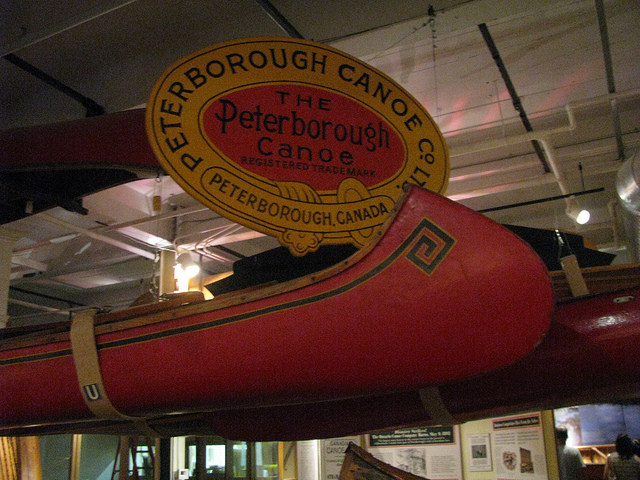The Trent-Severn Waterway is a 386 km (240 mile) long canal system that connects Lake Ontario with Lake Huron via a series of lakes, rivers and canals. It starts in Trenton, Ontario, and ends in Port Severn on Georgian Bay, the southern portion of Lake Huron, and was built in the second half of the 19th century and the early 20th century to facilitate transport of timber for logging companies. Balsam Lake, not far from Peterborough, is the watershed of the area, where the Severn River flows westwards, and the Trent River flows eastwards towards Lake Ontario. With an altitude of 840 feet, this is the highest point on earth to which a boat can travel from sea level.

Approaching Lock 20 on the Trent-Severn Waterway
Construction of this engineering marvel began in 1833 in Bobcaygeon and was not finished until 1920. Grant explained that the construction of the waterway would proceed in fits and starts, since most of the construction happened in the years leading up to elections. Politicians knew how to use the continued construction of the various portions of the canal as an effective vote buying tool.

Lock 20 is still operated manually today by cranking this mechanism
Lock 20 of the waterway, the Ashburnham Lock, is a manually operated lock and connects Little Lake with the Trent Canal which helps to overcome the steep elevation drop and the rapids in the northern part of Peterborough. It took about 15 minutes for our boat to be lifted up and over the lock into the canal. Passing under a historic and still operational railroad bridge we approached one of the most significant sights along the Trent-Severn Waterway: the Peterborough Lift Lock.

Lock 21 – the famous Peterborough Lift Lock
Built between 1896 and 1904, these dual boat lifts are the highest hydraulic boat lifts in the world. Captain Graham also told us about the engineer behind these lift locks: Richard Birdsall Rogers, who studied canal systems in England, Belgium and France to come up with the design of this structure. The Peterborough Lift Lock boasts many engineering firsts: it was the first lock built of concrete, and at the time of its inauguration, this was the largest solid unreinforced concrete construction on the planet. In 1987, the Peterborough Lift Lock was designated a Historic Mechanical Engineering Landmark by the American Society of Mechanical Engineers.

We are inside Lock 21, waiting to get lifted almost 20 metres!
Essentially, the lift lock is composed of two huge concrete “bathtubs” that move up and down using the counterweight principle. While one basin ascends the other one descends, using gravity alone. The water level of the top basin is 30 cm higher than the lower one, causing an extra weight of 144 tons. And this extra weight makes the upper basin descend, while at the same time lifting the lower basin and any boats that might be in it.

Now we are on top of Lock 21 – high up in the air!
The height difference between the lower and the upper levels of the canal is 19.8 metres or 65 feet. This was a significant achievement at a time when other locks only had a rise of about 2 metres. And it only takes about 4 minutes to ascend or descend between the higher and lower levels. Now about 20 feet higher on the Trent Canal we went for another half a kilometer or so until we turned around. Just before our turnaround point we cruised underneath a bridge that is a popular diving spot for local kids. Several teenage boys were holding on to the bridge’s railing and let us pass, only to jump down into the water the second we had sailed by. Then Captain Graham swung our vessel around and we started our slow ride back.

Local teenagers are jumping off the bridge
On the way back our captain pointed out a building with a circular roof right next to the Peterborough Lift Lock, the Lift Lock Visitor Centre. Up on the hill west of the lift lock is another Peterborough landmark: the former Westclox factory, built in 1922 as a subsidiary of an Illinois-based company that manufactured thousands of Canadian Big Ben clock models during the first half of the 20th century. Production came to a halt in 1986 when manufacturing moved to cheaper off-shore locations. Then the former factory, now renamed Times Square, underwent a complete transformation, was turned into 152 residential condo units and some commercial and office spaces and became an example of a highly successful conversion of a historic industrial structure.

The historic Westclox Factory
After this comprehensive introduction to some of Peterborough’s most well-known landmarks, it was now time for my next adventure: the Canadian Canoe Museum.



